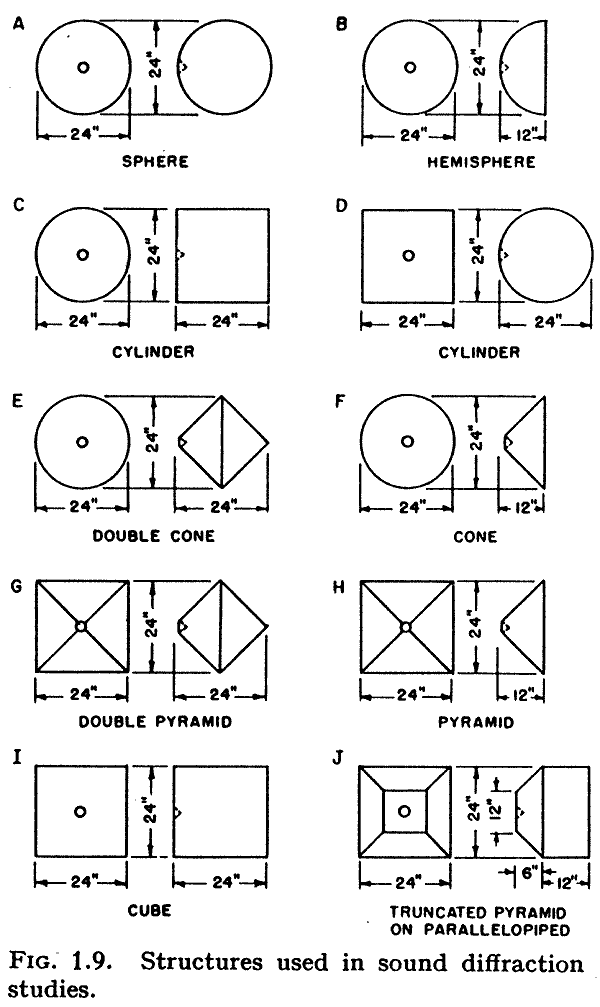Maker Audio Model 10 Loudspeakers - Unique self ampli... | Full range | AudiogoN
I was under the impression that cylinders were not an ideal enclosure design. Anyone have any thoughts on this?
thanks
I was under the impression that cylinders were not an ideal enclosure design. Anyone have any thoughts on this?
thanks
It depends on what one's trying to accomplish. Loosely speaking, the Bessel modes of a cylinder are easier to manage than the Fourier resonances of a traditional box. For example, with some care in stuffing the Linkwitz Pluto manages a 40dB return loss from the enclosure (SL's data). Not on the same level as the waveguide plus tapered transmission line B+W uses in their Nautilus but much easier to build.
Maker's enclosure is shorter than the Pluto's so I'd tend to expect the return loss to be not as good. However, there are various things one can do to make a cylinder approximate a tapered line which aren't externally visible. Some, such as attaching an anechoic cone to the end opposite the driver, verge on the trivial.
Maker's enclosure is shorter than the Pluto's so I'd tend to expect the return loss to be not as good. However, there are various things one can do to make a cylinder approximate a tapered line which aren't externally visible. Some, such as attaching an anechoic cone to the end opposite the driver, verge on the trivial.
Properly done they work just fine . . . allowing maximum absorption of the back wave with minimum "box" resonance. They work best when the pipe diameter is small (and length long) relative to wavelength.I was under the impression that cylinders were not an ideal enclosure design. Anyone have any thoughts on this?
PLUTO-2.1 omni-directional loudspeaker
Hi Aptquark,
I think you may be referring to diffraction ripple problems. In my experience, this is not such a big problem for bass/mid-range drivers as it is for dome type tweeters with wide dispersion when mounted in the center of a circular baffle.
Harry F. Olsen did some research into this as shown in this link - Diffraction Information & Graphs.
I think there is also some info on SL's web site as well.
Regards
Peter
I think you may be referring to diffraction ripple problems. In my experience, this is not such a big problem for bass/mid-range drivers as it is for dome type tweeters with wide dispersion when mounted in the center of a circular baffle.
Harry F. Olsen did some research into this as shown in this link - Diffraction Information & Graphs.
I think there is also some info on SL's web site as well.
Regards
Peter
Hi Aptquark,
I think you may be referring to diffraction ripple problems. In my experience, this is not such a big problem for bass/mid-range drivers as it is for dome type tweeters with wide dispersion when mounted in the center of a circular baffle.
Harry F. Olsen did some research into this as shown in this link - Diffraction Information & Graphs.
I think there is also some info on SL's web site as well.
Regards
Peter
Thanks guys...
Peter, all the pics in the article are not showing? Can you see them?
Hi Aptquark,
Yes, it comes up ok for me. If that link doesn't show correctly then maybe you can try this one from SL.
Diffraction from baffle edges
Please note that the original link I sent shows responses of many different types of enclosure with their corresponding diffraction signature. So it is well worth reading. Another point that I should mention is that diffraction ripple changes with the angle you listen/measure at.
Regards
Peter
Yes, it comes up ok for me. If that link doesn't show correctly then maybe you can try this one from SL.
Diffraction from baffle edges
Please note that the original link I sent shows responses of many different types of enclosure with their corresponding diffraction signature. So it is well worth reading. Another point that I should mention is that diffraction ripple changes with the angle you listen/measure at.
Regards
Peter
Here is the original page 23 from Olson:

and the cooresponding boxes:

Mounting a driver on the end of a cyclinder causes sugnificant ripple as the speaker transitions thu the 2pi to 4pi region.
It also has a significant potential standing wave across the diameter or the pipe, On the other hand it can be uses as a transmission line to dissipate the rear wave.
dave

and the cooresponding boxes:

Mounting a driver on the end of a cyclinder causes sugnificant ripple as the speaker transitions thu the 2pi to 4pi region.
It also has a significant potential standing wave across the diameter or the pipe, On the other hand it can be uses as a transmission line to dissipate the rear wave.
dave
- Status
- This old topic is closed. If you want to reopen this topic, contact a moderator using the "Report Post" button.
- Home
- Loudspeakers
- Multi-Way
- I'm confused...cylinders?